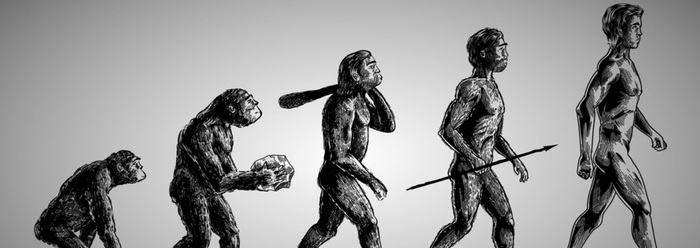Scientists have discovered that virtually all fossils found in the Cambrian sediments of the geologic column appear suddenly and are exceptionally preserved. One popular example is the complex, extinct invertebrate called the trilobite, with its thousands of named species.1
[Trilobites are arthropods with paired, jointed appendages and] represent a major part of the great evolutionary mystery called the Cambrian Explosion. In fact, they are one of the most common fossils in Cambrian system strata. They appear in the rock layers fully formed—without ancestors. Evolutionist Richard Fortey writes, “And yet how can it be that all this variety [the trilobite fossils] arose apparently instantly at the base of the Cambrian?” He continues, “Where then were these ancestors? Why were they apparently invisible?” These questions are easily answered by creationists, who explain the sudden appearance of fossils in the Cambrian system as part of the initial sediments deposited by the Flood. It seems likely that shallow marine organisms would be the first types of animals buried and preserved by advancing floodwaters.2
Recently, paleontologists from Chengjiang Fossil Museum in China, and the Natural History Museum in London have redescribed an amazing fossil arthropod. It was unearthed in Cambrian (early Flood) sedimentary rock allegedly 520 million years old.
The animal, which has the scientific name Kylinxia, was imaged using a CT [computerized tomography using a series of X-ray images] scanner which revealed its soft anatomy buried in the rock. The size of a large shrimp, its surprising features include three eyes on the head and a pair of fearsome limbs presumably used to catch prey.3
"The preservation of the fossil animal is amazing,” said lead author of the study Robert O'Flynn. In addition, “over 250 species of exceptionally preserved fossil organisms have been described”3 from the Chengjiang biota. ICR’s Tim Clarey describes this Cambrian unit:
Over 250 species have been identified in the Chengjiang Biota, including worms, arthropods, and vertebrates (chordates), the highest number of any Cambrian unit. These animals appear suddenly and fully-formed in the Yu’anshan Formation...4
What would cause such remarkable preservation of these creatures, including Kylinxia? A sudden, massive flood of sediments described in the early chapters of Genesis. The year-long Flood would overwhelm and bury Cambrian creatures as well as trillions of others throughout the fossil record.
Like the trilobites, Kylinxia was buried and preserved quickly, allowing scientists to investigate its anatomy in detail.
Because the new Chinese material is preserved nearly complete, the team were able to image the head of Kylinxia, identifying six segments: the front one bearing eyes, the second with a pair of large grasping limbs, and the other four each bearing a pair of jointed limbs.3
Dr. Greg Edgecombe from the Natural History Museum in London, who was not involved in the study, stated, “Discovering two previously undetected pairs of legs in Kylinxia suggests that living arthropods inherited a six-segmented head from an ancestor at least 518 million years ago."3 (Emphasis added.)
But this is only a suggestion based on unobserved evolution of arthropods for over a half-billion years.
There remains the “endless dispute”5 regarding the cryptic origin of the arthropod head.
[It has long been called] the arthropod head problem, also the (pan)arthropod head problem. Specifically, it involves the ongoing quarrel among evolutionary zoologists regarding the segmental configuration of the heads of the numerous arthropod groups, and how they are supposedly related to each other by evolution. This has been a serious problem for evolution theory since at least 1897 for both extant (living) arthropods as well as arthropod fossils known from the Cambrian faunas.6
The difficulty is, in part, the exact nature of the flap-like structure called the labrum in front of the mouth. In addition, the degree to which the arthropod’s pre-oral region is segmented remains highly contentious.
To conclude, Kylinxia was indeed an amazing animal but was not related to crustaceans7 or insects.8 Its soft anatomy was incredibly preserved, allowing zoologists to carefully study it with a CT scanner. It was one more animal that reflected creative design and organization by the Lord Jesus.
References
- Sherwin, F. Trilobite Demise. Creation Science Update. Posted on ICR.org June 12, 2023, accessed September 16, 2023.
- Clarey, T. Trilobites: Sudden Appearance and Rapid Burial. Acts & Facts. 43 (2).
- University of Leicester. Three-eyed distant relative of insects and crustaceans reveals amazing detail of early animal evolution. ScienceDaily. Posted on sciencedaily.com August 29, 2023, accessed September 14, 2023.
- Clarey, T. Cambrian Explosion Explained by the Flood. Creation Science Update. Posted on ICR.org April 4, 2022, accessed September 16, 2023.
- Rempel, J. 1975. The Evolution of the Insect Head: the Endless Dispute, Quaestiones Entomologicae, 11: 7–25.
- Sherwin, F. Half-Billion-Year-Old Fossil Brains? Creation Science Update. Posted on ICR.org July 18, 2022, accessed September 16, 2023.
- Sherwin, F. Creation, Convergence, and Crabs. Creation Science Update. Posted on ICR.org July 3, 2023, accessed September 16, 2023.
- Sherwin, F. No Sign of Beetle Evolution. Creation Science Update. Posted on ICR.org April 7, 2022, accessed September 16, 2023.
Stage image: Not the trilobite fossil mentioned in this article.
* Dr. Sherwin is science news writer at the Institute for Creation Research. He earned an M.A. in zoology from the University of Northern Colorado and received an Honorary Doctorate of Science from Pensacola Christian College.






















